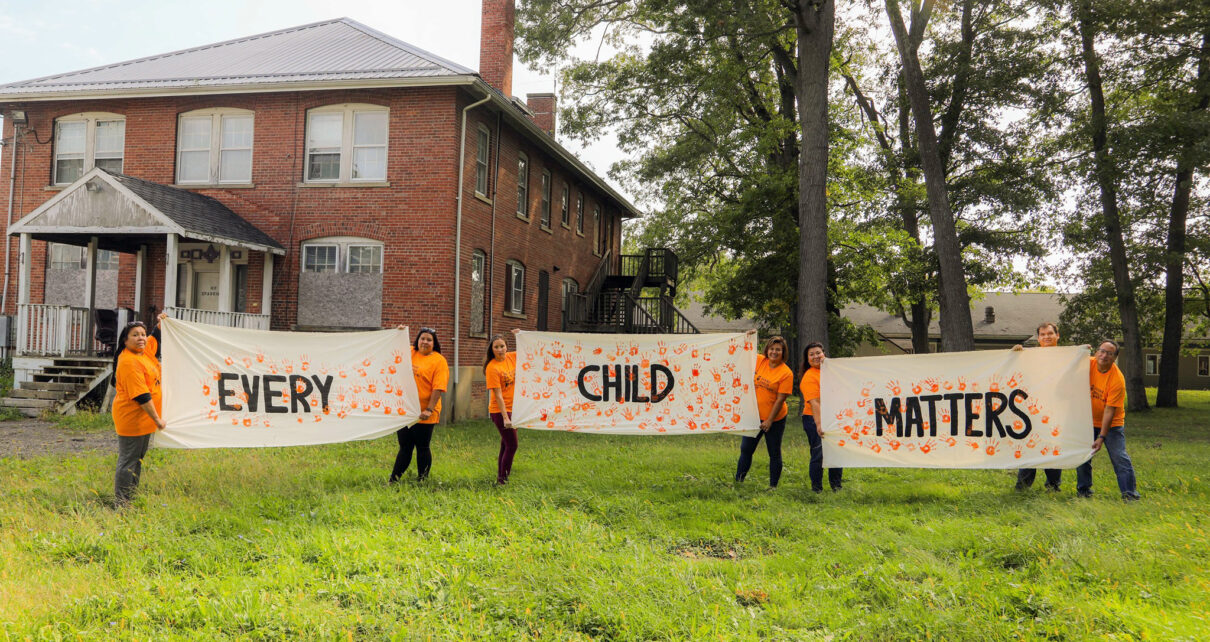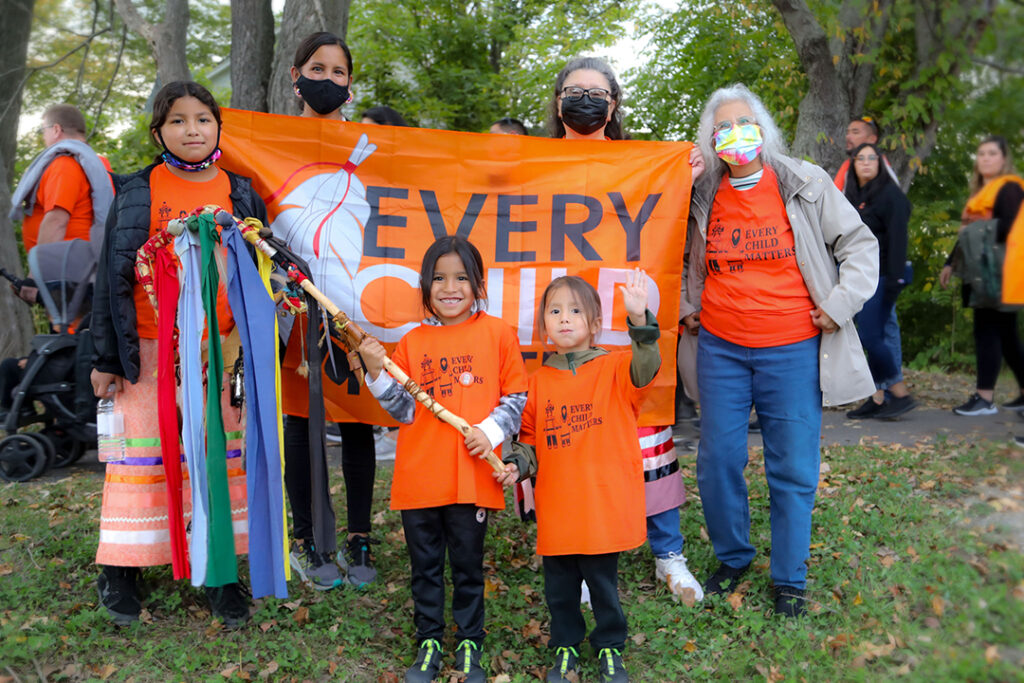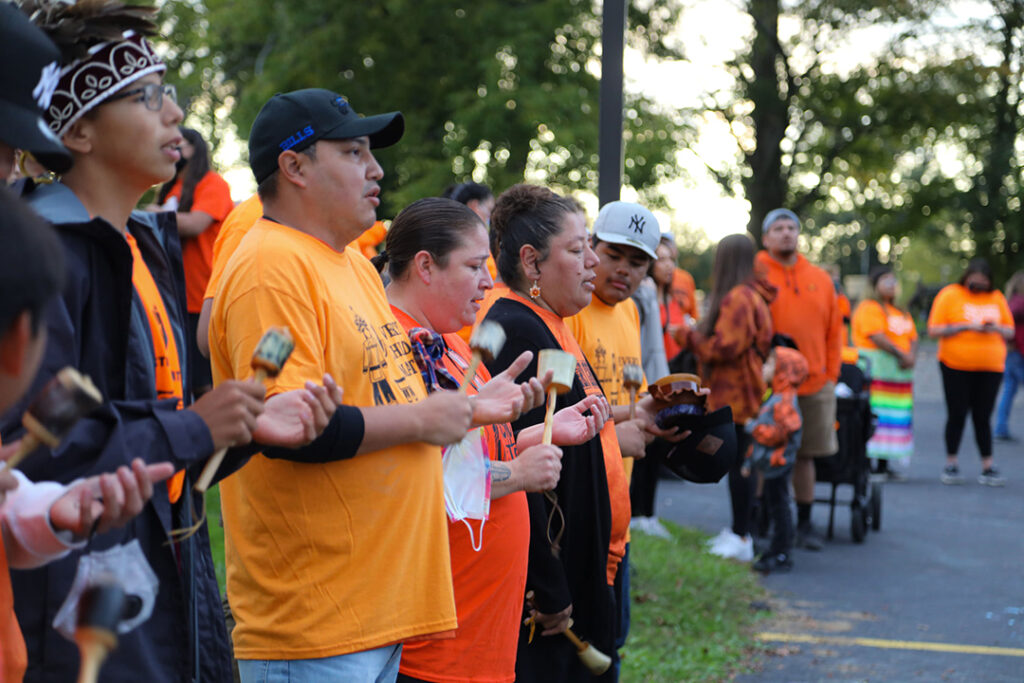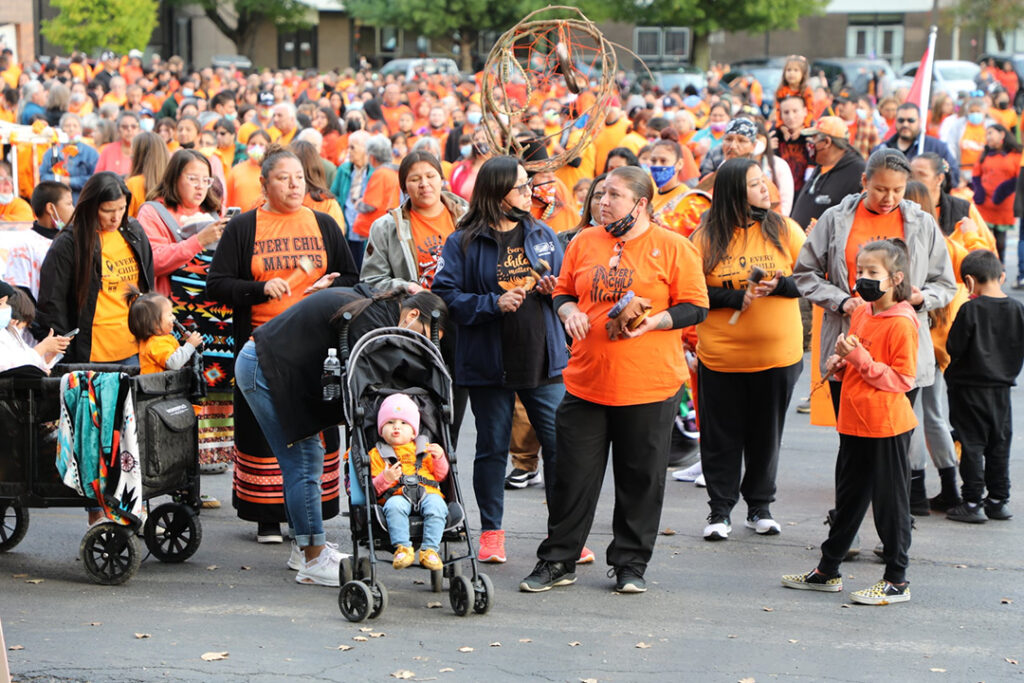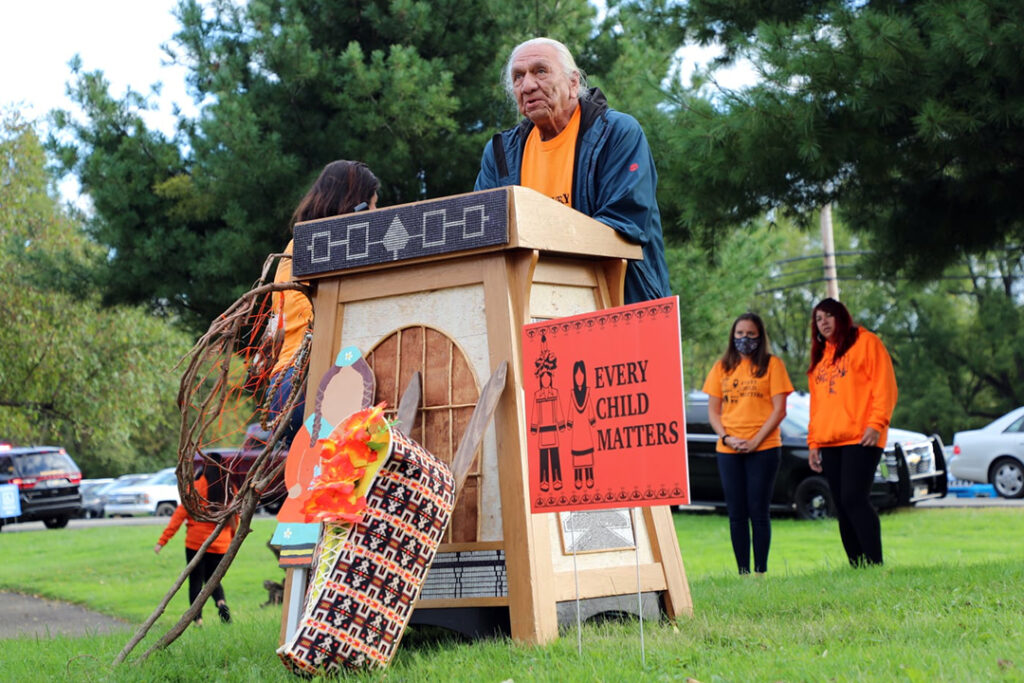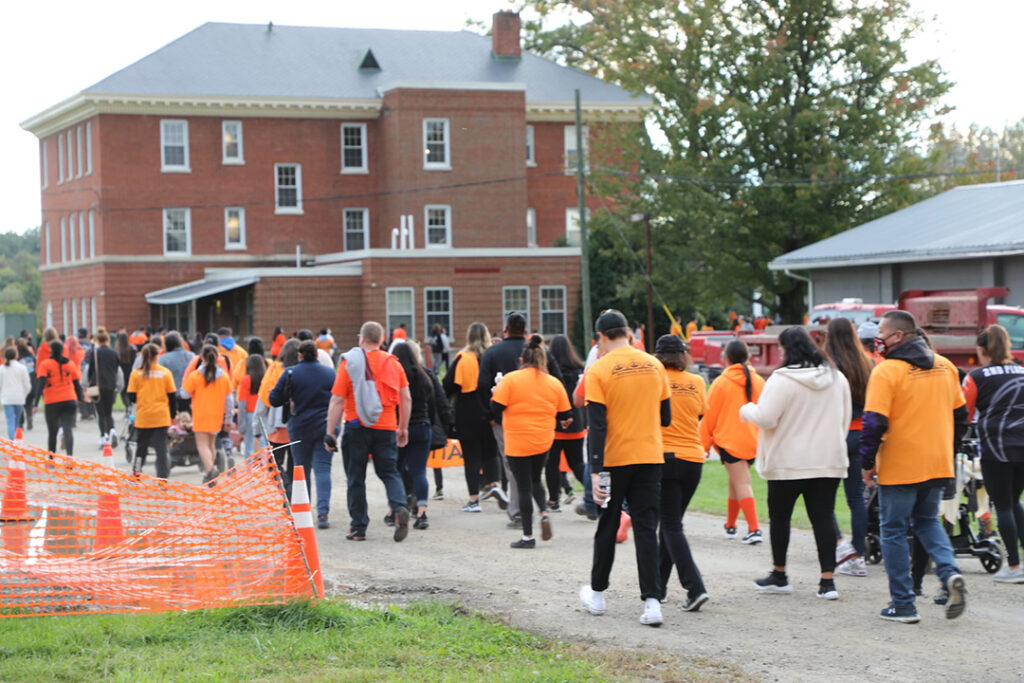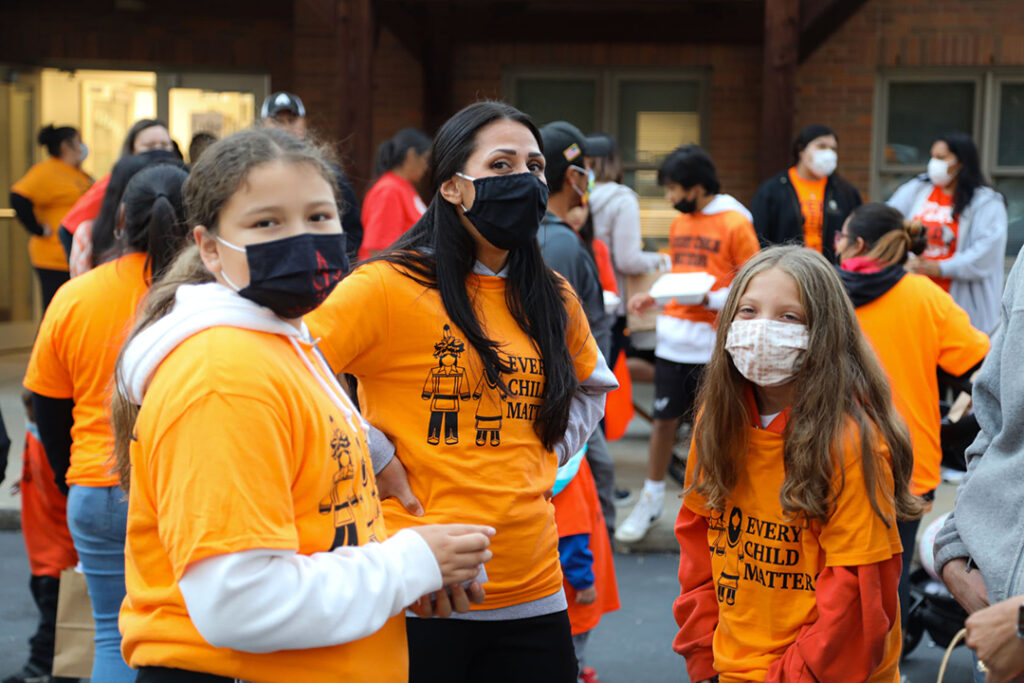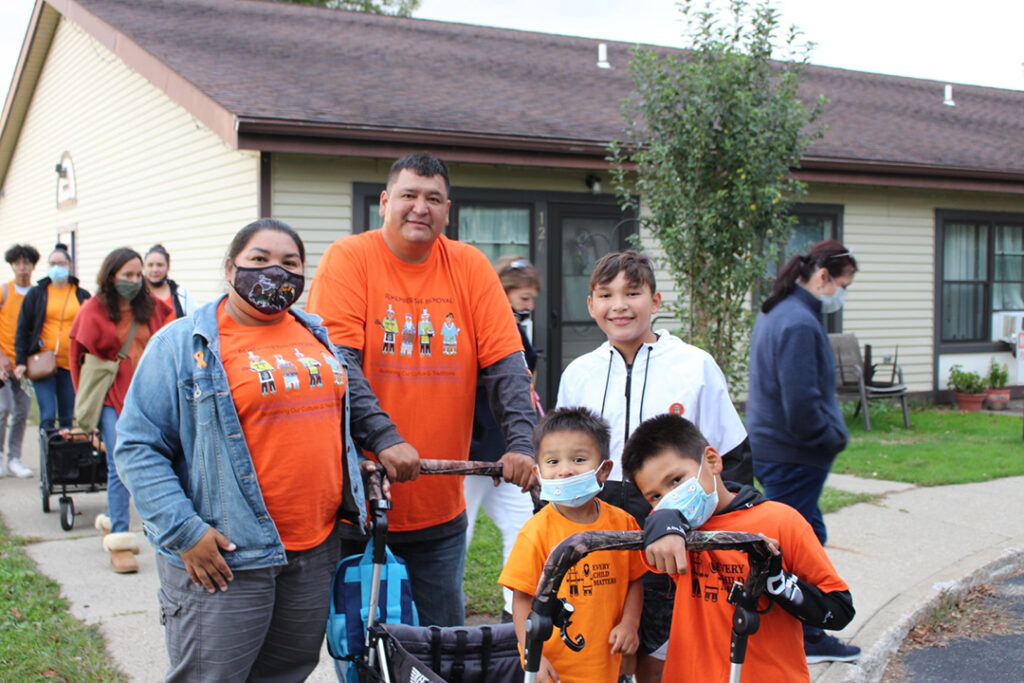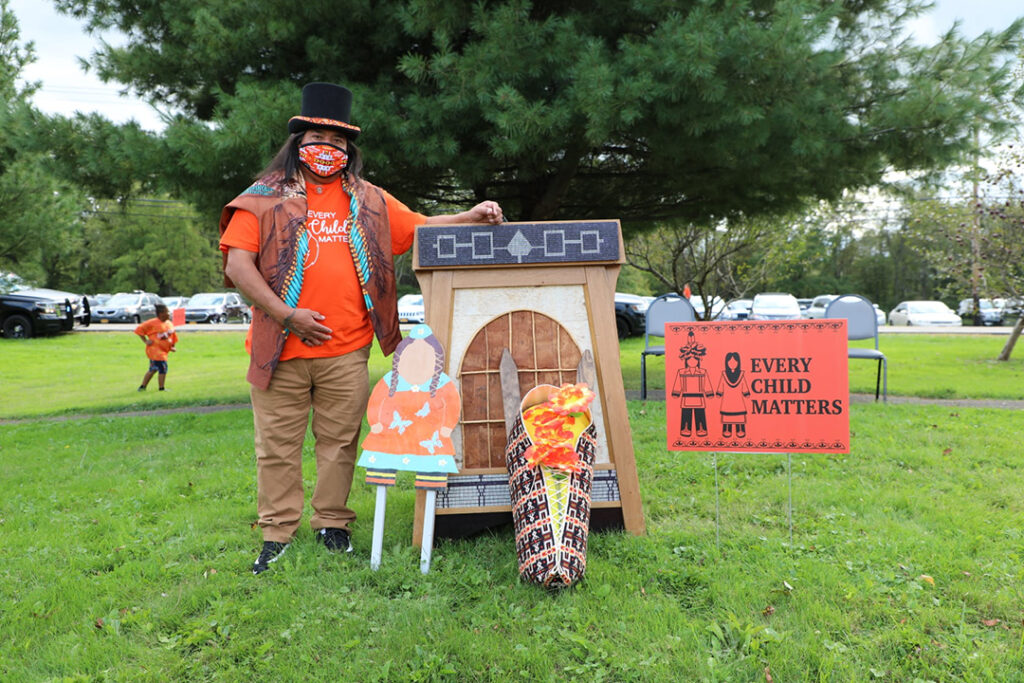By Megan Torres, Reporter. Photos by Seneca Media
On September 30th, 600 plus community members gathered to remember and honor residential school survivors and the children who never made it home. AOA along with the Crime Victim Services Department and Child & Family Services organized the walk that took place throughout the grounds of the former Thomas Indian School.
President Pagels opened with the reason of why we were gathering, “As a nation, we often gather for many different reasons. We gather together to celebrate, or to remember, or to mourn. It is that close sense of togetherness that bonds us across generations. Today, we gather to share and, hopefully to heal.” He also spoke on the lack of acknowledgment from the outside government, “To this day, the United States has never formally acknowledged nor apologized for its role in perpetuating the horrible things that occurred at the residential schools, nor has New York State. It is beyond time for them to do so.” Back in August, President Pagels wrote to the Secretary of Interior Deb Haaland, requesting that the Tunesassa Indian Boarding School, the Hampton Institute and the Thomas Indian School be included under the recently announced Federal Indian Boarding School Initiative.
Following President Pagels was Thomas Indian School survivor Elliott Tallchief. Elliott shared his story of growing up at the school and what life was like for him afterwards. He spoke of the atrocities that took place there, “I remember being punished for speaking the language… I remember thinking to myself, is this really happening… this is how I was brought up. They made us feel like everything we did was wrong. If it wasn’t their way we would get beat up.” Elliot touched on the trauma he has felt his whole life and how he never really wants to talk about it but that if he doesn’t, no one will know what really happened there.
Dr. Lori Quigley spoke next about the multi generational trauma that is a direct result of the residential schools, “Me along with my sisters are daughters of a survivor of the Thomas Indian School… watching my mom raise us… I began to see as a young Seneca woman the impact.” She touched on how every individual present at the walk that evening has been impacted by the trauma that the residential boarding schools caused.
After the conclusion of the remarks, the community set off on the 1 mile walk throughout the grounds of the former Thomas Indian School. Participants were dressed in orange as September 30th is known as “Orange Shirt Day”. As a way to continue to honor all who have been impacted by the residential schools, Council has passed a resolution officially declaring September 30th “Orange Shirt Day”.
It was also the day where the Residential School Exhibit initiated by Hayden Haynes, opened for the first time to the public. The exhibit which is titled “Hënödeyësdahgwah’geh Wa’öki’jö Ogwahsä’s. Onëh i:’jögwadögwea:je’.” Which translates to “We were at the school. We were there. We remember.” The exhibits’ current location is inside of the Sully Huff Heritage Center in Irving, NY and features the following Hodinöshoni artists: Luann Redeye, Randi Spruce, Peter B. Jones, Samantha Jacobs, Faye Lone, Patrick Redeye and Tami Watt. It is expected to be a traveling exhibit.
The discovery of the 215 innocent children at the former Kamloops Indian Residential School has sparked a nationwide initiative and has opened up the wounds of so many survivors and their families. In honor of all survivors and those who never made it home, the community will continue to remember, heal and bring awareness to the #EveryChildMatters movement. For more information about Seneca students in boarding schools and for student rosters, please visit the Iroquois Genealogy website at https://www.iroquoisgenealogysociety.org/archive-school-records.

